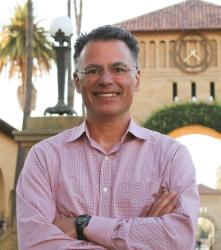Since 1960, the world’s population has more than doubled. Average life expectancy increased by 50 percent and income per person tripled. The share of people living in extreme poverty declined from 54 percent to 10 percent (data are available through 2018, pre-pandemic). Technology revolutionized how we communicate, how we travel, and even what we eat. For people in China and India, the changes have been especially dramatic.
This progress didn’t result from miracle—it was through investment in education, research, and development. It came because most governments dedicated themselves to the idea—framed in the Universal Declaration of Human Rights—that “everyone has a right to education.” So, even as the world’s population grew quickly, so did educational attainment, and people’s capacity to produce, build institutions, invent, and adapt (Figure 1).
Figure 1. World population (in millions) by level of education, 1960-2020
1960

1990
2020
 Source: Wittgenstein Centre Human Capital Data Explorer Version 2.0, Wittgenstein Centre for Demography and Global Human Capital.
Source: Wittgenstein Centre Human Capital Data Explorer Version 2.0, Wittgenstein Centre for Demography and Global Human Capital.
At the same time, we have been living hard on the planet. In 1960 about 60 percent of the Earth’s surface was wilderness, and today it’s only 35 percent. The rate at which biodiversity is being lost due to human activity rivals the five mass extinctions in the Earth’s history. Annual C02 emissions have quadrupled. Inequality has reached intolerable levels. And tragically, the number of armed conflicts has risen, many of which are driven by extreme ideologies or competition for resources.
Can education be the antidote to a world prone to fracture along environmental, social, and economic fault lines? Can education systems incorporate new insights into how children learn, cultivate scientific thinking, and become more inclusive of people pushed to the margins?
In considering these questions, it is important to note that investments in education have a delayed effect. Children entering school today will be fully functioning adults only 15-20 years from now. To shape the world of 2050, we need to act now.
The stakes are high. As challenges of sustainability become obvious, so does the need for better education. An increasingly large fraction of the decisions people will need to make involve science and technology. They need to “think like experts,” as Stanford University Professor Carl Wieman says, on the day-to-day issues raised by global warming, public health, and technology. Education is the first best way for people and societies to thrive.
It’s also important to note that the majority of the next generation is growing up in the most resource-constrained countries in the world. By 2050, 57 percent of the world’s youth will be in sub-Saharan Africa and South Asia. Many countries in these regions are struggling to build a qualified and motivated teaching force, create a rich learning environment in schools, and develop the infrastructure for technologies that could enhance learning.
Achieving a “rapid development scenario” for the next generation
With startling effect, Wolfgang Lutz and Claudia Reiter at the Wittgenstein Centre for Demography and Global Human Capital simulate what the world’s population might look like in 2050 under various scenarios in a human capital data explorer. In a “stalled development scenario,” where there would be very limited new investment in education and health in the poorest parts of world and high barriers to migration, world population would likely top 10 billion by 2050 (Figure 2). A substantial number of people would have no education or only a primary school education—insufficient to sustain growth and development. In a “rapid development scenario” where countries make substantial progress to meeting the Sustainable Development Goals on education and health by 2030, world population would likely be 8.6 billion by 2050. And perhaps more significantly, younger adults would be substantially better educated and prepared to face the challenges of their time. It would be a different world—one with more opportunities for people to thrive and potentially less pressure on the planet.
Figure 2. World population by level of education in 2050
Stalled development

Rapid development
 Source: Wittgenstein Centre Human Capital Data Explorer Version 2.0, Wittgenstein Centre for Demography and Global Human Capital.
Source: Wittgenstein Centre Human Capital Data Explorer Version 2.0, Wittgenstein Centre for Demography and Global Human Capital.
How do we increase the chances of achieving the rapid development scenario? A new report by the Wittgenstein Centre, commissioned by the Yidan Prize Foundation, suggests a few priorities:
- Recognize that education begins before schooling. Focusing on the learning experience of early childhood can have profound and lasting impact on a child’s physical and intellectual development.
- Provide at least 10-12 years of schooling for all. Primary education alone is not enough to bring a poor country out of poverty.
- Employ more and better trained teachers. No other factor will increase the learning success of children more than good, motivated, and motivating teachers.
- Make use of technological innovations that can help teachers provide good education almost for free, even in the most remote corners of the Earth.
- Encourage lifelong learning. Recognize that education does not only happen during school and job training, but that it is a lifelong necessity to help people remain physically, mentally, and economically active as they live longer lives.
In an increasingly complex and globalized world, the education of the next generation in all corners of the globe needs to be everyone’s concern. We should support education like our lives depend on it.




Commentary
How can education be the antidote to a world prone to fracture along environmental, social, and economic fault lines?
July 7, 2021